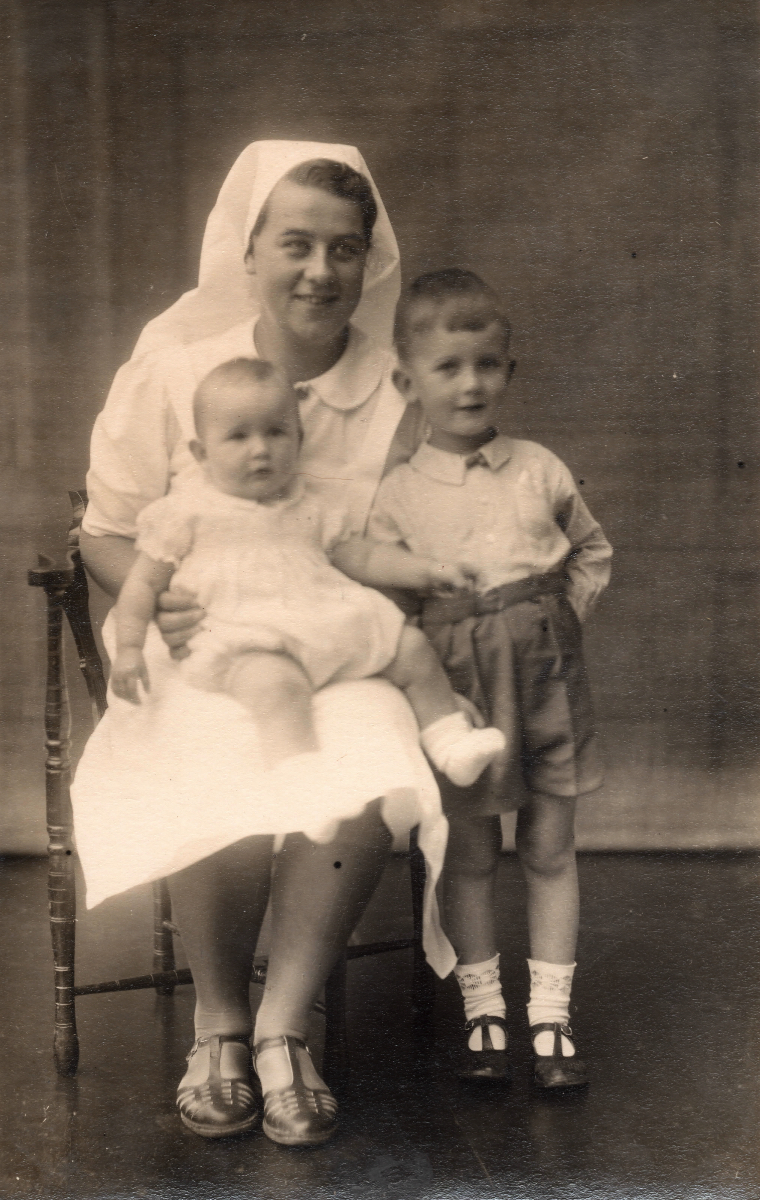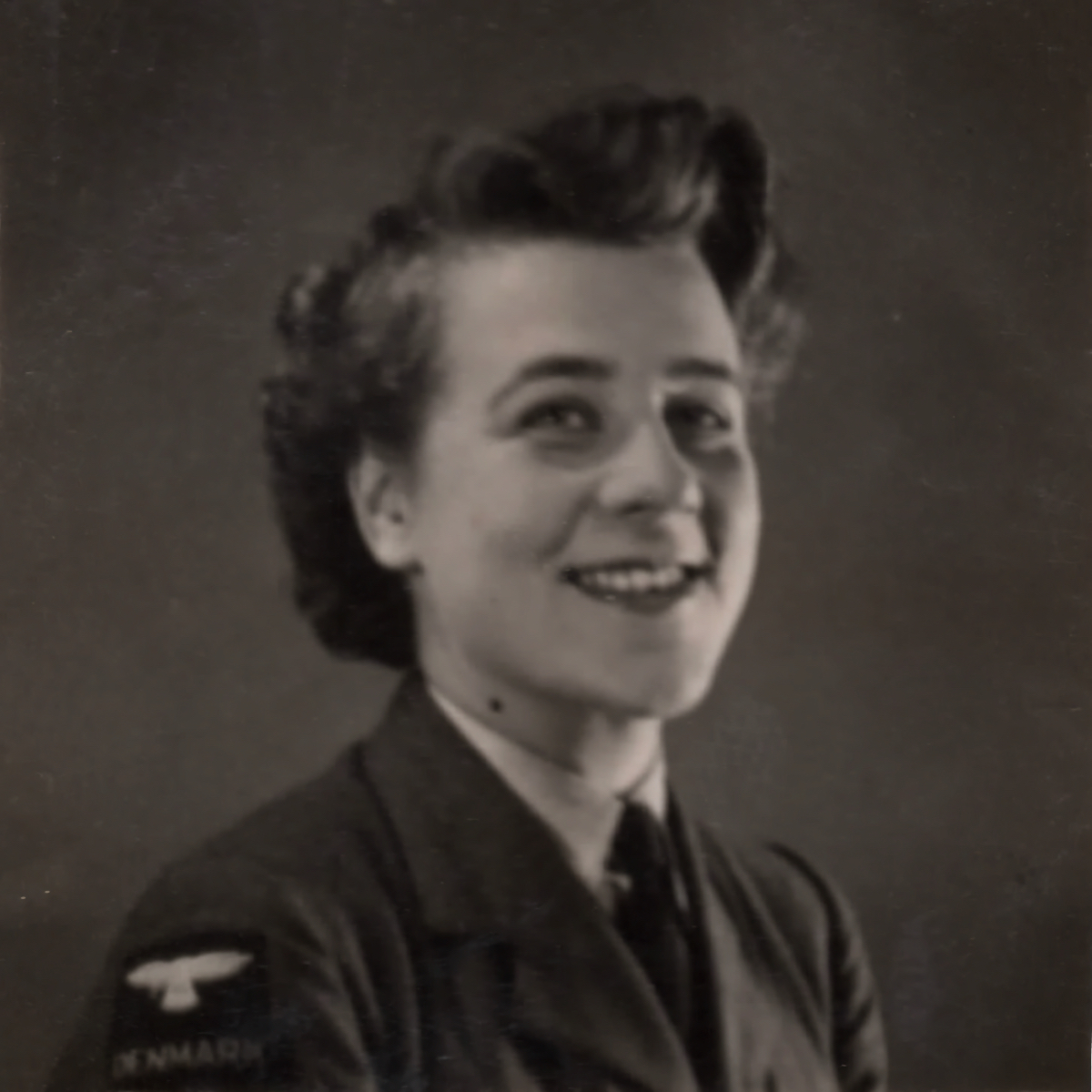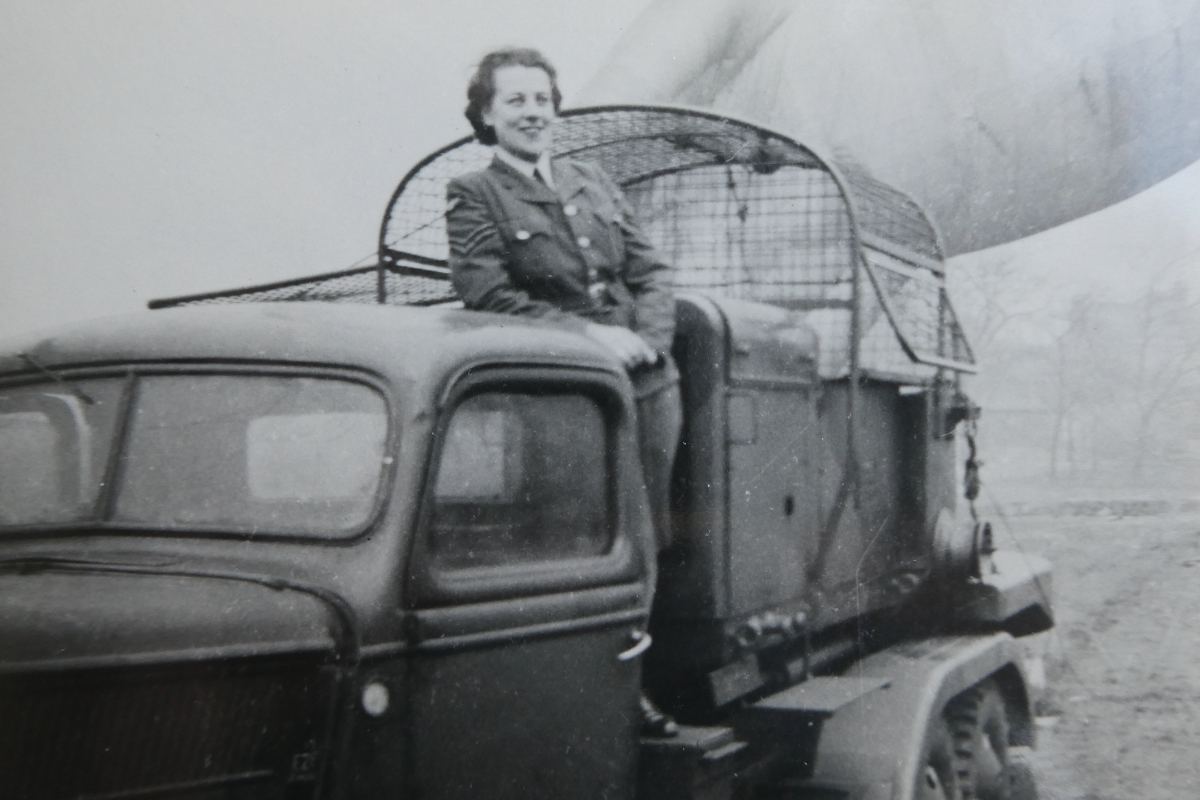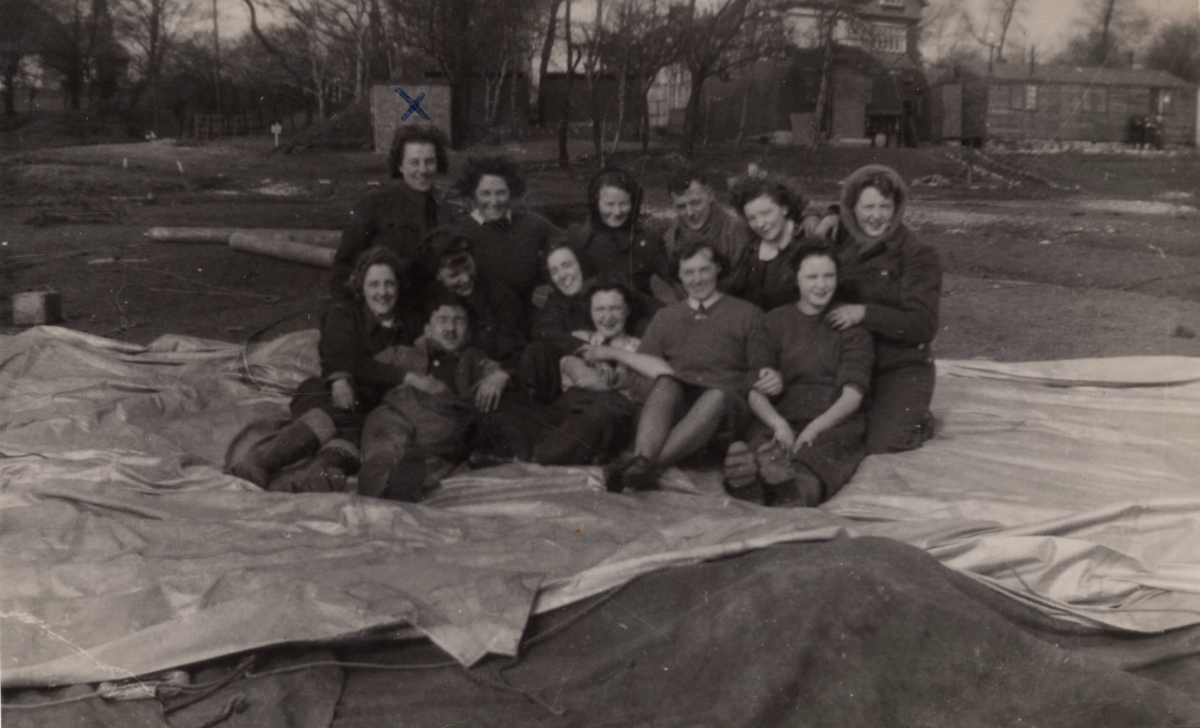Cpl Marie Helene Margrethe Jepsen (m. Rasmussen)
(1916 - 2004)
Profile
Cpl Margrethe Jepsen was one of twenty-two Danish women, who served in the Women’s Auxiliary Air Force during the Second World War. She enlisted in February 1942 and served as a balloon operator until October 1944.
Marie Helene Margrethe Jepsen was born into a Danish family on 19 August 1916 in Flensburg, Germany. She was the daughter of Jep Boisen Jepsen and Margarethe Jepsen (née Hansen). [1] Jepsen’s father was second generation in the family business. J.B. Jepsen & Sohn was sold and repaired pianos, and from 1925 onwards Jepsen’s father was in charge of the shop in Tønder, a town north of the new Danish-German border following the the 1920 Schleswig plebiscites.[2]
Children's Nurse
Jepsen was educated as a children’s nurse before the war. From 1936-1937 she served as a house maid in families near her home and later in a Copenhagen suburb. Then followed a year as an apprentice at a children’s nursery—Forårsblomsten (The Spring Flour) in Hellerup north of Copenhagen before leaving for the United Kingdom.[3]

In October 1938, she travelled to England to take up a position as such in the household of Reverend William Thorburn Elmslie, who was the general secretary of the Presbyterian Church in England. [4] Two of her sisters, Sophia and Dorthea, were in England at the time and the three siblings celebrated Christmas together in London in 1938 and were active members of the Danish YWCA in London in 1938-1939. Sophia and Dorthea returned to Denmark at the eve of the outbreak of war in Europe in September 1939. They did not see each other before the end of the war.[5]
At the outbreak of war, Mrs Elmslie, the children and Jepsen evacuated from London and lived for a while at Brathay How in the Lake District in Cumbria. This was the home of Reverend Elmslie’s widowed mother. [6] At the time of the German occupation of Denmark, in April 1940, they were living in Eilden View in Lilliesleaf in Scotland.[7]
Balloon Operator
Jepsen enrolled as an Aircraftwoman in the Women’s Auxiliary Air Force (WAAF) on 20 January 1942 and reported for regular service two weeks later, on 5 February 1942.[8]

The Women’s Auxiliary Air Force (WAAF) came into existence on 28 June 1939, absorbing the Royal Air Force companies of the Auxiliary Territorial Service, which had existed since 1938. The WAAF comprised approximately 1,700 women initially working in six different trades. At its peak, in mid-1943, the number of women in the service had risen to 182,000 women working in 75 different trades. The object was “to ensure that no machine was ever grounded because men were employed on duties that could be done by women.”[9]The women received basic training at one of five sites before continuing into the many different trades of the service.
Jepsen trained as a balloon operator. She was one of two Danish WAAFs known to have been trained in this trade, the other being Maggie Sivertsen. RAF Balloon Command established on 1 November 1938 was in control of the barrage balloons across the British Isles. From early in the war the balloons of the Balloon Command protected Britain from low-level, dive-bombing and, later, dive bomb attacks from an increasing number of sites. Headquartered in Stanmore, Middlesex, in was divided into several groups (Nos. 30-34) Group) divided into centres (Nos. 1-18 Balloon Centre). Each centre was responsible for a number of squadrons manning a number of balloon sites all over the country.[10]

Following nine weeks of training, Jepsen served initially in the Glasgow area. It is presumed from the information available that she served in 947 (City of Glasgow) Balloon Squadron. She was later posted to Manchester, home of No. 10 Ballon Centre and its 925 and 926 (East Lancashire) Balloon Squadrons. From September 1942, she is know to have been attached to RAF Fern Acre på Wellington Road i Eccles and Site 126. The information available suggest that she served in 926 Sqn. On 30 November 1942, she is promoted to Corporal in charge of a squad of twelve WAAF.[11]
In early 1944, she was posted to 912 (County of Warwick) Squadron in Woodstock on Upon Lane in Barnwood, near Gloucester. The squadron had been tasked with the protection of the Gloster Aircraft Company’s factory at Brockworth since 1940. Jepsen served at different sites during her time in Gloucester.

In mid-1944, Jepsen was posted to RAF Withal before being transferred to an administrative position at RAF Shobdon, which she held until the end of the war. While serving at this unit, in November 1944, she participated in a theatre production of Vernon Sylvain’s Women Aren’t Angels featuring a number of the servicemen and servicewomen at the station.
Fiancé killed in German attack on Bari
Jepsen was engaged to the Danish machinist Søren Anton Jensen. In mid-1943, he was engaged on-board the SS Lars Kruse, a Danish vessel requisitioned by the British authorities. In September 1943, Lars Kruse left Britain for the Mediterranean. On 2 December 1943, the Lars Kruse was one of many Allied ships in the harbour in Bari, when a large formation of Ju 88 surprised the defences and successfully attacked. What followed has later been known as ‘little Pearl Harbor’ because of the number of ships sunk, destroyed and damaged and the vast number of casualties. More than 1,000 people lost their on this day or in the following weeks. A Liberty-ship John Harvey in the harbour was carrying a secret cargo of mustard gas bombs, and following the attack liquid sulfur mustard leaked from the ship into the waters mixing with oil from other damaged vessels. Sailors trying to get ashore from the inferno caused by the attack were covered by this mixture when pulled from the water. However, given the secret nature of the cargo, the medical staff did not know of the mustard gas and, therefore, they were not given the appropriate treatment. As a consequence, many died of mustard gas poisoning. [12] Søren Anton Jensen died in No. 98th British General Hospital on 6 December 1943, four days after the attack.[13]
Repatriation
Jepsen was discharged on termination of her engagement with the RAF on 18 May 1946. She returned to Denmark in 15 February 1946. On 20 September 1947, she married and became Mrs. Rasmussen.[14]
Endnotes
[1] DNA: Parish register, Tønder Sogn.
[2] DNA: 1921, 1925, 1930, 1940 Census of Denmark.
[3] Letter of recommendation from Asta Jensen at Forårsblomsten, 1 September 1938.
[4] In memoriam, The Alpine Journal, Vol. LV, No. 270, May 1945, p. 86-89.
[5] Ud som Barneplejerske, hjem som Corporal i Royal Air Force, Berlingske Tidende, 6. januar 1946.
[6] Ancestry: 1939 Register for England and Wales.
[7] Letter of recommendation from Mrs Elmslie, 15 June 1944.
[8] Royal Air Force, Airman's Service and Pay Book. Margrethe Jepsens pas bekræfter, at hun den 5. februar 1942 registrerer sig som udlænding hos politiet i Glasgow.
[9] Turner, John Frayn (2011). The WAAF at War, p. 166.
[10] RAF Balloon Command, Wikipedia, https://en.wikipedia.org/wiki/RAF_Balloon_Command (hentet 29. marts 2025).
[11] Ud som Barneplejerske, hjem som Corporal i Royal Air Force, Berlingske Tidende, 6. januar 1946.
[12] Sauders, C. D. M. (1967). The Bari Incident. Proceedings, September 1967.
[13] TNA: BT 389/19/19; Krüger, H. (2009). Sømænd i helvede.
[14] DNA: Parish registration, Tønder Sogn.